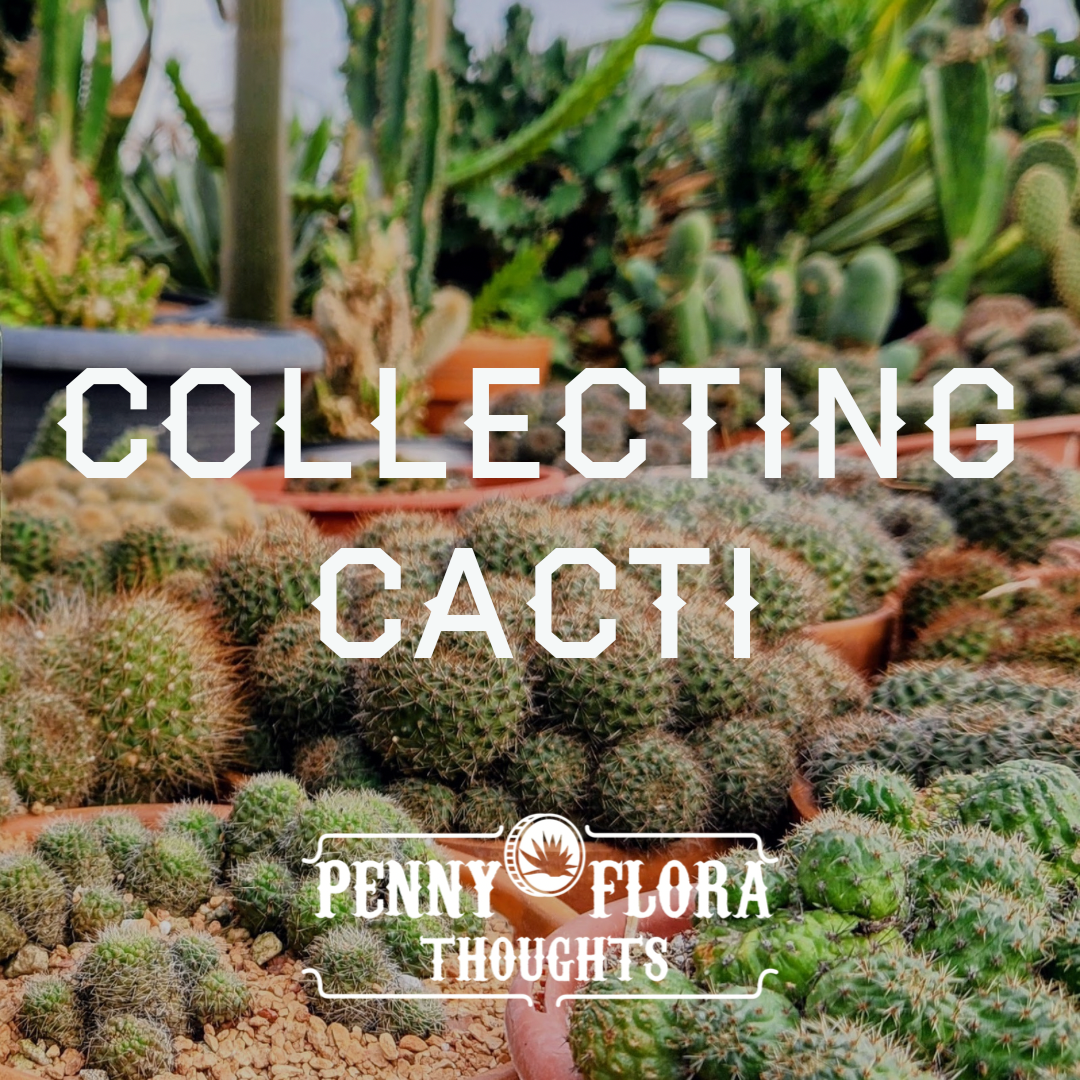Hey garden friends! If succulents are your jam, it’s time to add some cacti to your collection. They’re definitely just as cool and also thrive indoors along sunny south facing windows. They come in funky shapes and burst out some amazing flowers like those in this time-lapse video. The only caution is cacti are highly addictive. Just ask Jared who started growing cacti 16 years ago and now has hundreds in his personal collection.
Cacti or Succulent?

Some may think cacti and succulents are the same. But it’s kinda like the “square is a rectangle but not all rectangles are squares” thing. Cacti actually are a special kind of succulent. They stand out from echeveria, haworthia and other succulents, since they lack leaves. Instead, they have aeroles -- or surface bumps from which spines, stems and flowers grow.
Natural History

The cactus family is all-American and not native to Europe, Africa or Australia. Very little is known about early cactus plants since only two cactus fossils have ever been found. According to Desert USA, the oldest, found in Utah, dates to 50 million years ago and was similar to today's prickly pear.
While many think cacti are just desert plants, they also can be found growing in tropical regions like Mexico and the Caribbean and at high elevations in the Sierra Nevadas and Andes mountains.
Favorite Cacti

While there are more than 2,000 kinds of cacti, our team at Groovy Plants Ranch suggest a few favorites that are perfect for beginners. We offer a variety of sizes, shapes and colors both online and in the Mercantile Hut at our retail store.
Echinopsis – Native to South America, this prickly variety is nicknamed “hedgehog” or “sea urchin” cactus and produces large showy flowers (4-6”) in warmer months.
Rebutia – These popular clumping cacti are called “crown cacti” and originally come from Bolivia and Argentina. Many flower profusely from rounded domes and readily send out offshoots. Jared has a huge rare Rebutia collection.

Opuntia – These unusually shaped cacti are made of segmented oval pads and are commonly called “bunny ear,” “prickly pear” or “polka dot” cacti. Their flowers bloom at the end of the segments and are followed by fruits. Many hardy varieties can be grown outdoors year-round in colder climates to zone 4. To learn more, check out this opuntiad website.

Cereus – We’re so excited our giant night-blooming cereus recently bloomed in the Mercantile Hut. While this beast is only part of the décor, we have plenty of smaller columnar ones for sale.

Mammillaria – These “powderpuff” or “pin cushion” cacti are rounded and feature a crown of blooms. Many grow offsets that are easy to pull off and repot for more cacti plants.
Indoor Cacti Care

To begin, place potted cactus near a sunny south-facing window with at least 6 hours of sunlight. For watering, remember cacti thrive in periods of drought. So, make sure your cactus has a pot with a drainage hole. From April to October while a cactus is growing, water it thoroughly until the water exits the hole. Then let the plant dry out before watering again. Depending on the size pot and plant, try watering every 7 to 14 days. Also, remember to fertilize during this growing period. We like Algo Cacti and Succulent fertilizer.
In winter (when cacti are dormant and not growing), hold off on fertilizer and cut back watering to every 4 to 5 weeks or more. For more care tips, see this online guide by the Columbus Cactus and Succulent Society.
Repotting Cacti
Every two years or so, cacti need to be repotted. Jared put together a helpful video with tips for repotting cacti and handling the prickly plants. First off, he recommends wearing gloves and assembling supplies – a clay pot with a hole, cacti potting mix and some newspaper. To remove the plant, use a piece of newspaper or brown packing paper. Twist it into a band and wrap it around the plant, so you can lift it out without physically touching it. (Tongs can also do the trick.) Place the plant in the new pot, and lightly fill sides with potting mix tapping the pot as you go to remove air pockets. To finish, top dress the soil with a layer of decorative gravel. For more potting tips, see this “Pot with Style” blog post.
Outdoor Cacti Care
Several cacti, like prickly pears, chollas and hedgehog cacti, are cold hardy and can be grown year-round outdoors in colder climates. At Groovy Plants Ranch, we grow echinocereus, cylindropuntia, opuntia and more in a display garden at the entry of the parking lot. Here, they are planted in full sun in a mounded raised bed that ensures good drainage. Hardy cacti can also be potted in containers. To add a Southwest flair to your porch or patio, try filling a pot with some of our cool variegated prickly pear cacti.
Cacti Travel

Sometimes, the best way to appreciate plants is to see them growing in the wild. Here are some top U.S. travel destinations for viewing cacti from the towering saguaros of the Sonoran Desert to the teddy bear chollas of Joshua Tree National Park. Visit in March to May for peak bloom times.
- California: Mojave National Preserve, Anza Borrego Desert State Park, Death Valley National Park, Joshua Tree National Park and The Living Desert Museum and Botanical Park
- Texas: Big Bend National Park
Read more of our Cactus & Succulent centered blogs like these:



6 comments
I received a beautiful metal cactus from your ranch as a gift.
I want to send a gift. Why is there no metal art on your website?
Do you carry prickly pare cactus?
Do you carry Christmas cactus
Do you have any San Pedro cacti?
We recently acquired 3, over 6 foot tall, prickly pair “trees”, would those be ok, outside in Ohio winters?